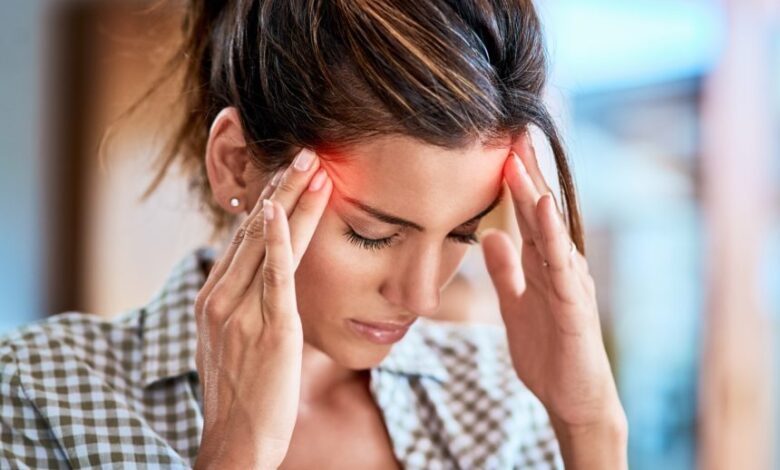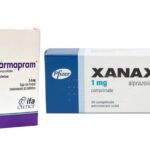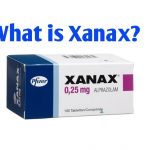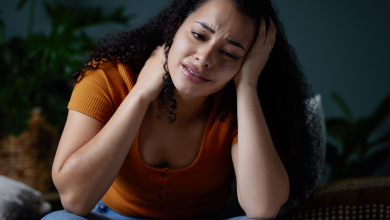How Do You Manage Xanax Side Effects

Xanax is a brand of alprazolam a prescription medicine that is used to treat anxiety disorders. The U.S. Food and Drug Administration (FDA) approved alprazolam in 1981. Xanax is also used to treat panic disorders with or without a fear of places and situations that might cause panic, helplessness, or embarrassment (agoraphobia).
It is dangerous to purchase Xanax on the Internet or outside the United States. The sale and distribution of medicines outside the U.S. do not comply with safe-use regulations of the Food and Drug Administration (FDA). These medications may contain dangerous ingredients, or may not be distributed by a licensed pharmacy.
Xanax is classified as Schedule IV controlled substance. These are substances that have a lower potential for abuse and addiction than schedule III, but the risk does remain. They also require a prescription and are not available over the counter.
How does Xanax Work?
Benzodiazepines like Xanax work by attaching to a receptor in your brain called the GABA-A (gamma-aminobutyric acid-A) receptor. When Xanax binds to this receptor, it has a calming effect on the brain.
For anxiety disorders, Xanax is often prescribed because it can help relieve anxiety symptoms quickly. However, other anxiety medications and talk therapy are better long-term choices for treating anxiety because Xanax has side effects, risk of overdose, and the potential for dependence.
These other treatments may take a few weeks to take effect, though. So Xanax and other benzodiazepines are sometimes used as a “bridge” until other treatments can have a chance to work.
For treating insomnia, behavioral therapy and other medications are also generally preferred over Xanax.
How long does Xanax last?
Most people notice that Xanax will start to work within 1 to 2 hours. For healthy younger adults, half the dose of Xanax has left the body somewhere between 6.3 to 26.9 hours. The average is around 11 hours.
It takes a little longer for Xanax to leave the body of healthy elderly people. Half the dose of Xanax has left the body in elderly people somewhere between 9 to 26.9 hours. The average is around 16 hours for this group.
However, people stop feeling the effects of Xanax long before it leaves the body, which is why it is often taken more than once a day. It’s important to take it as prescribed. Taking too many doses can lead to dependence and accidental overdose.
What are the side effects of Xanax?
Xanax may cause side effects. Tell your doctor if any of these symptoms are severe or do not go away:
• drowsiness
• light-headedness
• headache
• tiredness
• dizziness
• irritability
• talkativeness
• difficulty concentrating
• dry mouth
• increased salivation
• changes in sex drive or ability
• nausea
• constipation
• changes in appetite
• difficulty urinating
• joint pain
Some side effects can be serious. If you experience any of the following symptoms, call your doctor immediately or get emergency medical treatment:
• shortness of breath
• seizures
• severe skin rash
• yellowing of the skin or eyes
• confusion
• problems with speech
• problems with coordination or balance
However, elderly patients are more likely to have unwanted effects (eg, severe drowsiness, dizziness, confusion, clumsiness, or unsteadiness) and kidney, liver, or lung problems, which may require caution and an adjustment in the dose for patients receiving this medicine.
Xanax may cause other side effects. Call your doctor if you have any unusual problems while taking this medication.
If you experience a serious side effect, you or your doctor may send a report to the Food and Drug Administration’s (FDA) MedWatch Adverse Event Reporting program online (http://www.fda.gov/Safety/MedWatch) or by phone (1-800-332-1088).
Xanax Withdrawal Symptoms
Xanax is often prescribed for short-term use only because of its highly addictive nature. When people take it for longer than recommended (or without a prescription), their chance of developing a physical dependence on the drug is much higher, which makes sense now that you know about how the drug affects the brain.
This also makes a withdrawal from the drug a physically and mentally tough process. Even short-term users and users who follow their prescription may experience Xanax withdrawal symptoms.
Withdrawal Timeline
You can experience symptoms as early as 6 hours after your last dose. They will begin to get worse over time and peak in their intensity around 48 hours after your last dose.
Most of your withdrawal symptoms will be gone after 4 to 5 days. However, Xanax can permanently affect the brain, especially if you were a heavy and long-time user.
Your brain will need time to heal and time to relearn how to function normally without the drug. If you began taking Xanax as a treatment for anxiety, expect your condition to feel worse or more intense after you suddenly stop taking Xanax.
Other long-term effects that can be lifelong include psychosis, permanent cognitive damage, memory loss, and dementia.
You may also experience post-acute withdrawal syndrome (PAWS) that can also lead to withdrawal symptoms for months or years after quitting. With PAWS, you can experience classic withdrawal symptoms, drug cravings, permanent changes in mood, depression, social issues, and more.
How to manage Xanax side effects and withdrawal symptoms
There are various methods of coping with Xanax’s side effects and managing withdrawal symptoms. Here are 10 ways to get through your side effects and withdrawal symptoms with a minimal amount of discomfort:
- Attend a medical detox program. Medical detox is a program that lasts 5-10 days on average and provides around-the-clock supervision and medical management for withdrawal symptoms . Cravings and symptoms can be managed with medications, and emotional support is provided 24/7 to keep clients safe.
- Exercise regularly. Healthy amounts of exercise can help the brain to release endorphins and thus positively restore chemical balance. Exercise can also reduce tension and stress, and help a person to sleep better while enhancing self-esteem. Studies published by the Journal, Frontiers in Psychology show that exercise can help to minimize relapse and decrease compulsive drug use and cravings, therefore aiding in recovery.
- Eat balanced and nutritious meals. Diet can play a big role in healing both the mind and body. Eating meals that are rich in proteins and essential vitamins and nutrients is essential for restoring healthy brain and body functioning. Drugs and alcohol can deplete the body of what it needs to run efficiently, and it is vital to replace these nutrients during withdrawal to expedite healing. Staying away from caffeine, refined sugars, processed foods, oils, and saturated fats can help also.
- Stay hydrated. Dehydration is common during withdrawal. It is important to drink enough water to allow the body to heal properly. Many times, cravings may be mistaken for thirst or hunger. Keeping the body properly hydrated and nourished can aid in reducing these instances.
- Stick to a structured sleep schedule. Getting the proper amount of sleep is vital to healing and emotional health. When a person is well rested, they are better able to think clearly and control mood swings, side effects and cravings. Going to bed at the same time every night and waking up at the same time in the morning is a good way to establish a healthy sleep schedule. Try not to become overly stimulated before trying to go to sleep
- Stretch often, and consider yoga and/or mindfulness meditation. Stretching and yoga poses can stimulate blood flow and circulation, and relieve tension and muscle pain. Mindfulness meditation and yoga use breathing techniques to help people become more aware and in tune with their bodies. By understanding and responding to physical cues, a person can better understand the emotional response involved. A study published by Harvard Health Publications show that it can be an effective method for lowering anxiety, physical pain, and depression – all of which can be side effects of withdrawal.
What is the safest way to take Xanax?
Because of Xanax’s serious side effects and the risk of misuse and dependence, you should only take it under the supervision of a healthcare provider. If you and your provider decide that Xanax is right for you, take it at the lowest dose possible for the shortest time possible.
If you are taking Xanax, you should also avoid alcohol and certain drugs such as opioids (Vicodin, Oxycontin). These substances affect the brain in similar ways and can have an additive effect. They can lead to serious health complications such as breathing problems and sometimes even death. All of these substances have a high risk of misuse and dependence. For More Information You Can Visit: How Long Does Xanax Stay in Your System





